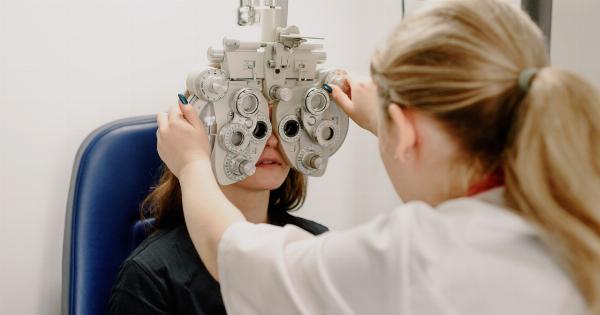When it comes to protecting our eyes from the harmful rays of the sun, sunglasses play a crucial role.
Not only can they enhance our vision and improve our overall comfort, but they also shield our eyes from potentially permanent damage caused by prolonged exposure to ultraviolet (UV) radiation. However, with a myriad of options available in the market, choosing the right sunglasses for eye safety can be quite overwhelming.
To simplify the selection process and ensure maximum protection for our eyes, it is essential to consider several key factors. In this article, we will explore the most important criteria to consider when selecting sunglasses for eye safety.
1. Ultraviolet (UV) Protection
One of the most crucial factors to consider when selecting sunglasses for eye safety is their ability to block out harmful ultraviolet (UV) radiation.
Prolonged exposure to UV rays can increase the risk of eye conditions such as cataracts, macular degeneration, and even certain types of cancers. Therefore, it is imperative to choose sunglasses that provide 100% UV protection. Look for sunglasses labeled with “UV400” or “100% UV protection” to ensure adequate shielding from both UVA and UVB rays.
2. Lens Material
The material of the lenses is another important consideration when selecting sunglasses for eye safety.
Different lens materials offer varying levels of impact resistance, clarity, and durability, which can determine the overall safety and performance of the sunglasses. Some popular lens materials for eye safety include polycarbonate, Trivex, and high-index plastic. These materials are lightweight, shatterproof, and provide excellent UV protection.
3. Lens Color and Tint
The color and tint of sunglasses’ lenses also play a significant role in eye safety. While lens color preference is mostly subjective, certain tints can enhance visual clarity and minimize eye strain in specific environments.
Gray and green tints offer natural color perception and reduce brightness without distorting colors, making them versatile options for everyday wear. On the other hand, yellow, amber, and orange tints are ideal for low-light conditions and sports activities as they enhance contrast.
4. Fit
A proper and comfortable fit is crucial for ensuring eye safety and optimal vision while wearing sunglasses. Ill-fitting sunglasses can leave gaps for UV rays to penetrate and may cause discomfort or even fall off during physical activities.
Look for sunglasses that sit close to the face and provide enough coverage to shield the eyes from all angles. Adjustable nose pads, temple tips, or wraparound styles can help customize the fit, providing added stability and protection.
5. Polarized Lenses
Polarized lenses are highly effective in reducing glare, which is particularly beneficial for outdoor activities such as driving, water sports, and skiing.
Glare occurs when sunlight reflects off flat surfaces like water, snow, or pavements, causing visual discomfort and potential hazards. Polarized sunglasses neutralize this glare, resulting in improved visual clarity and reduced eye strain.
However, it is important to note that polarization is separate from UV protection, so ensure the sunglasses offer both features for comprehensive eye safety.
6. Lens Coatings
Various lens coatings can provide additional benefits for eye safety and overall visual comfort. Some common lens coatings include anti-reflective coating, scratch-resistant coating, and mirror coating.
An anti-reflective coating reduces glare from artificial light sources, while a scratch-resistant coating protects the lenses from minor scratches and increases durability. Mirror coatings add a fashionable touch while reflecting back light, making them ideal for extremely bright conditions.
7. Frame Design and Material
The design and material of the sunglass frames can impact both the aesthetics and the safety of the eyewear. Frames should fit comfortably on the face and not put pressure on the temples or the bridge of the nose.
Additionally, the frame material should be sturdy, lightweight, and durable. Common frame materials include plastic, metal, and titanium. Wraparound styles or sports-specific designs can provide enhanced eye protection by minimizing peripheral light and reducing the risk of debris entering the eyes.
8. Lens Size and Shape
The size and shape of the lenses are important considerations for eye safety and visual comfort. Larger lenses provide broader coverage and better protection against UV rays, wind, and debris.
Wraparound styles or sunglasses with a close-fitting wrap design provide maximum coverage and reduce peripheral light. Additionally, lens shape can impact visual distortion, so it is essential to choose sunglasses with well-designed lenses that provide clear and accurate vision.
9. Prescription Options
For individuals who require vision correction, there are sunglasses available with prescription lenses. These sunglasses offer the convenience of combining eye safety with vision enhancement.
Prescription sunglasses can be made with high-quality lenses that provide the required level of UV protection and meet specific optical needs. Consult with an optician or optometrist to determine the best options for prescription sunglasses that prioritize both eye safety and clear vision.
10. Price and Brand Reputation
While price and brand reputation may not directly impact eye safety, they are additional factors to consider when selecting sunglasses.
High-quality sunglasses from reputable brands often undergo rigorous testing to ensure they meet industry standards for UV protection and optical performance. However, it is important to note that a higher price does not always guarantee superior eye safety or enhanced performance. Consider the aforementioned factors first and then choose sunglasses from reliable brands that fit within your budget.
Conclusion
When selecting sunglasses for eye safety, it is crucial to consider various important factors such as UV protection, lens material, lens color and tint, fit, polarization, lens coatings, frame design and material, lens size and shape, prescription options, as well as price and brand reputation. By carefully evaluating these factors, individuals can make informed choices that prioritize their eye safety while ensuring optimum visual clarity and comfort.



























